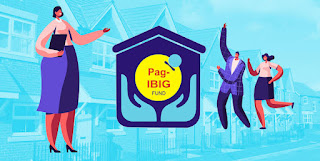𝐔𝐧𝐝𝐞𝐫𝐬𝐭𝐚𝐧𝐝𝐢𝐧𝐠 𝐑𝐞𝐚𝐥 𝐄𝐬𝐭𝐚𝐭𝐞 𝐅𝐢𝐧𝐚𝐧𝐜𝐢𝐧𝐠 𝐎𝐩𝐭𝐢𝐨𝐧𝐬 𝐢𝐧 𝐭𝐡𝐞 𝐏𝐡𝐢𝐥𝐢𝐩𝐩𝐢𝐧𝐞𝐬
Understanding Real Estate Financing Options in the Philippines
Buying a home is a big investment, and financing it requires careful planning. Whether you’re a first-time homebuyer or looking for an investment property, understanding the different financing options available will help you make the right decision.
Below are five common ways to finance a real estate purchase in the Philippines:
1. Bank Financing 🏦
Best for: Buyers with good credit standing and stable income sources.
How it Works:
• Banks offer home loans where you can borrow up to 80% of the property’s value.
• Loan terms can range from 5 to 20 years, depending on the bank.
• Interest rates vary but typically range from 5% to 8% per year.
Pros:
✅ Lower interest rates than in-house financing.
✅ Longer loan terms, which mean lower monthly payments.
✅ Banks may offer promotional rates for qualified borrowers.
Cons:
❌ Strict approval process (requires proof of stable income, good credit score).
❌ Processing time can take weeks or months.
❌ Some banks require a higher down payment.
2. In-House Financing 🏠
Best for: Buyers who don’t qualify for a bank loan or need faster processing.
How it Works:
• The developer or seller provides the financing, meaning you pay directly to them.
• The loan term is usually shorter (5-10 years) compared to banks.
• Interest rates are higher (10% to 18%) than bank financing.
Pros:
✅ Easier approval process (less strict requirements).
✅ Faster transaction since it’s handled by the developer.
✅ Suitable for buyers with no formal credit history.
Cons:
❌ Higher interest rates compared to bank loans.
❌ Shorter loan terms mean higher monthly payments.
❌ Not all developers offer in-house financing.
3. Spot Cash Financing 💰
Best for: Buyers with enough funds who want to save on costs.
How it Works:
• You pay the full amount upfront in one lump sum.
• Developers and sellers often offer big discounts (2% to 10%) for spot cash payments.
Pros:
✅ Huge savings on interest and processing fees.
✅ Faster processing time (you own the property immediately).
✅ No need to worry about monthly payments.
Cons:
❌ Requires a large amount of cash upfront.
❌ You might miss out on investment opportunities if your money is tied to one property.
4. PAG-IBIG Financing (Government Housing Loan) 🏡
Best for: Low- to middle-income earners who are Pag-IBIG members.
How it Works:
• Pag-IBIG offers affordable home loans to its members.
• Loanable amount can be up to ₱6 million with interest rates as low as 3% to 7% per year.
• Longer loan terms of up to 30 years, making it easier to pay.
Pros:
✅ Lower interest rates compared to banks and in-house financing.
✅ Lower down payment requirement (as low as 5%).
✅ Longer repayment period means lower monthly payments.
Cons:
❌ Loan processing may take time (1-3 months).
❌ Stricter requirements for self-employed and OFWs.
❌ Loan limits may not be enough for high-end properties.
5. Deferred Cash Financing 0% 🟢
Best for: Buyers who want interest-free installment payments.
How it Works:
• The property developer allows you to pay the full price in equal monthly installments over a fixed period (usually 2-5 years).
• No interest is charged as long as you complete the payment within the agreed time.
Pros:
✅ No interest rates, making it cheaper than bank or in-house financing.
✅ Faster approval process than banks or Pag-IBIG.
✅ Allows you to stretch payments without high upfront costs.
Cons:
❌ Requires higher monthly payments since the term is short.
❌ Not all developers offer this option.
❌ If you fail to pay on time, you might lose the property.
💡 Which Financing Option is Best for You?
🔹 If you want lower interest rates & longer terms: → 𝐁𝐚𝐧𝐤 𝐨𝐫 𝐏𝐚𝐠-𝐈𝐁𝐈𝐆 𝐅𝐢𝐧𝐚𝐧𝐜𝐢𝐧𝐠
🔹 If you need fast approval & flexible requirements: → 𝐈𝐧-𝐇𝐨𝐮𝐬𝐞 𝐅𝐢𝐧𝐚𝐧𝐜𝐢𝐧𝐠
🔹 If you have enough cash & want discounts: → 𝐒𝐩𝐨𝐭 𝐂𝐚𝐬𝐡 𝐅𝐢𝐧𝐚𝐧𝐜𝐢𝐧𝐠
🔹 If you want interest-free payments & shorter terms: → 𝐃𝐞𝐟𝐞𝐫𝐫𝐞𝐝 𝐂𝐚𝐬𝐡 𝐅𝐢𝐧𝐚𝐧𝐜𝐢𝐧𝐠
📌 Final Tips Before Choosing a Financing Option
✔ 𝐂𝐡𝐞𝐜𝐤 𝐲𝐨𝐮𝐫 𝐛𝐮𝐝𝐠𝐞𝐭 – Make sure the monthly payments are within your means.
✔ 𝐂𝐨𝐦𝐩𝐚𝐫𝐞 𝐢𝐧𝐭𝐞𝐫𝐞𝐬𝐭 𝐫𝐚𝐭𝐞𝐬 – Lower rates mean more savings in the long run.
✔ 𝐀𝐬𝐤 𝐚𝐛𝐨𝐮𝐭 𝐡𝐢𝐝𝐝𝐞𝐧 𝐟𝐞𝐞𝐬 – Some financing options have extra charges like processing fees, insurance, or penalties.
✔ 𝐑𝐞𝐯𝐢𝐞𝐰 𝐭𝐡𝐞 𝐭𝐞𝐫𝐦𝐬 𝐜𝐚𝐫𝐞𝐟𝐮𝐥𝐥𝐲 – Know the loan term, down payment, and other conditions before signing.
📞 Need Help?
If you’re looking for real estate financing assistance or want to explore affordable property listings, feel free to contact us!
Gladys Paquibot
09152116122




Comments
Post a Comment